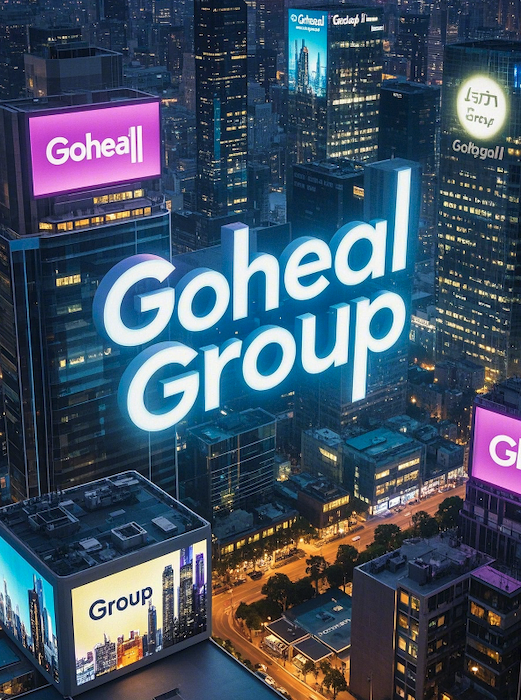The capital market is like a chess game. Whether you can win the initiative depends not only on the market trend, but also on the capital operation ability of the enterprise. From financing expansion to mergers and acquisitions, and then to share repurchases, every step is related to the future direction of the company. In recent years, the global capital market has been surging. Many companies have achieved soaring with superb capital operations, while other companies have fallen into a quagmire due to strategic errors.

American Goheal M&A Group
Goheal's research found that successful capital operations often follow five key factors: precise strategic positioning, reasonable financing structure, effective mergers and acquisitions, stable shareholder relations, and flexible market response capabilities. These factors not only affect the market value management of enterprises, but also determine their long-term competitiveness. So, in the game of capital operation, how can enterprises take every step correctly?
1. Strategic positioning: the first step of capital operation, if you go wrong, you will lose everything
Capital operation is not a simple "money-throwing game", but an extension of the company's long-term strategy. Without a clear strategic positioning, even if sufficient funds are obtained, it may lead to resource mismatch, and ultimately lose more than you gain.
Take Apple as an example. Its capital operation has always been centered around the "ecological closed loop". From software and hardware integration to supply chain integration, every capital decision is strengthening the brand moat. This precise strategic positioning has made Apple always invincible in the global market.
In contrast, the acquisition of Time Warner by AOL in 2000, which was called the "merger of the century", eventually became a negative example in the capital market. AOL hopes to expand the Internet content ecosystem with the help of Time Warner's media resources, but due to the unsmooth business integration and strategic mismatch between the two parties, the company's market value has shrunk significantly. This case fully illustrates that without a clear strategic positioning, capital operation can not only fail to promote corporate development, but may become a heavy burden.
2. Financing structure: the art of balancing risk and growth
The financing structure of an enterprise is the core link of capital operation. Whether it is through equity financing, debt financing, or mixed financing, reasonable capital arrangements directly determine the company's capital cost and risk resistance.
In Dell's acquisition of EMC in 2016, Dell completed the largest M&A in the history of the technology industry with $67 billion through a "leveraged buyout" (LBO) strategy. Although the market questioned Dell's high debt model at the beginning of the transaction, the company successfully reduced financial risks and improved long-term profitability through reasonable cash flow planning and subsequent asset restructuring.
However, over-reliance on financing leverage can also have devastating consequences. For example, during the 2008 financial crisis, Lehman Brothers' capital chain broke due to high leverage operations and eventually went bankrupt. Therefore, in capital operations, companies must ensure the rationality of the financing structure, have sufficient funds to support growth, and avoid financial risks brought by excessive debt.
3. Merger and acquisition integration: the "deep waters" of capital operations
M&A is a high-level way of capital operation, but successful mergers and acquisitions depend not only on the transaction itself, but also on the integration capabilities after the merger. If the integration is not done properly, the company may face the embarrassing situation of "1+1<2".
Air Products' acquisition of Airgas is a typical case. In 2010, Air Products launched a hostile takeover of Airgas, which was strongly opposed by the latter's management and even triggered a six-year legal battle. However, Air Products eventually successfully acquired Airgas and quickly improved its profitability through refined operations. This case shows that mergers and acquisitions are not simple equity transfers, but involve multiple dimensions such as cultural integration, management integration and business synergy.
Goheal believes that when companies conduct mergers and acquisitions, they must formulate detailed integration plans in advance, including organizational structure adjustments, operational synergy strategies and cultural integration plans to ensure that the acquired company can quickly enter a stable growth track.
4. Shareholder relations: the "invisible battlefield" of the capital market
In the capital market, the relationship between management and shareholders often determines the long-term development direction of the company. Good shareholder relationship management can help companies resist hostile takeovers, stabilize market confidence, and provide support for long-term strategies.
During Dell's privatization process, the company's founder Michael Dell successfully persuaded investors to support management's share repurchases through communication with major shareholders, allowing the company to get rid of the impact of short-term market fluctuations and refocus on long-term growth. This case shows that management needs to establish a close communication mechanism with shareholders, enhance shareholders' trust through regular information disclosure, shareholder return plans, etc., and avoid interference from external capital forces.
5. Market response: flexible adjustment, seize the capital wind
The capital market is changing rapidly, and the capital operation of enterprises also needs to be highly flexible in order to take the lead in market fluctuations. For example, in recent years, global technology stocks have experienced severe fluctuations, and many listed companies have stabilized stock prices through stock repurchases and enhanced market confidence.
Tesla's operation in the capital market can be called "textbook level". Faced with market doubts, Musk has successfully stabilized the company's market value and attracted more long-term investors through stock repurchases and capital structure adjustments. This flexible capital strategy has enabled Tesla to continue to maintain its leading position in the global new energy market.
Goheal believes that in the process of capital operation, enterprises cannot rely solely on traditional means, but must combine market trends and formulate flexible capital strategies to ensure that they stay ahead in the fierce market competition.
Conclusion: Capital operation, the "accelerator" of enterprise development
Capital operation is a profound art. It not only affects the short-term growth of enterprises, but also determines the long-term competitiveness of enterprises. From strategic positioning to financing structure, from M&A integration to shareholder relations, and then to market response capabilities, every link may affect the final success or failure.
So, in the big chess game of the capital market, which capital operation strategy do you think is the most critical? Welcome to leave a message in the comment area to discuss!

Goheal Group
[About Goheal] Goheal is a leading investment holding company focusing on global M&A holdings. It is deeply engaged in the three core business areas of listed company control acquisition, listed company M&A and restructuring, and listed company capital operation. With its deep professional strength and rich experience, it provides enterprises with full life cycle services from M&A to restructuring to capital operation, aiming to maximize corporate value and achieve long-term benefit growth.